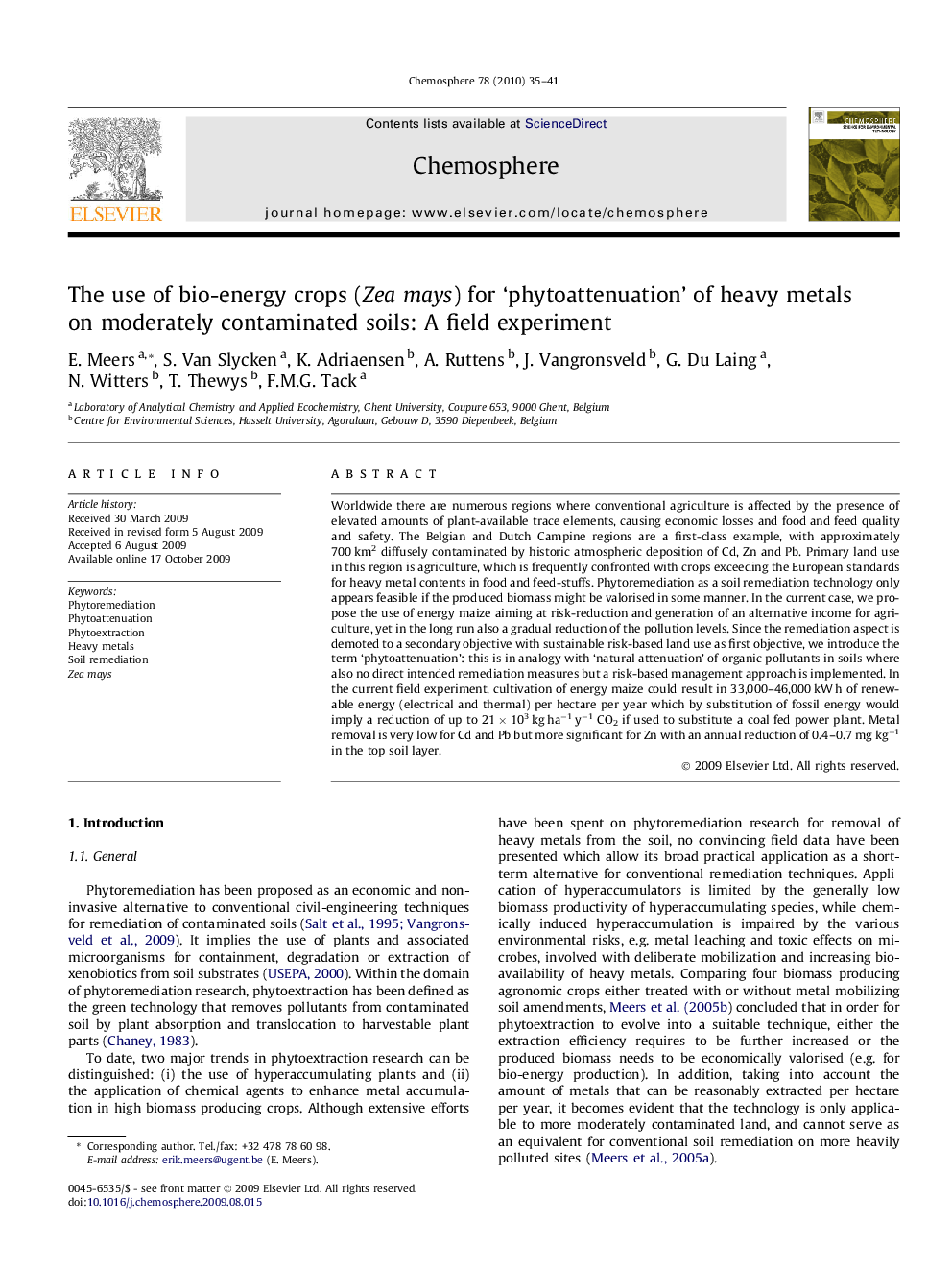| Article ID | Journal | Published Year | Pages | File Type |
|---|---|---|---|---|
| 4412479 | Chemosphere | 2010 | 7 Pages |
Worldwide there are numerous regions where conventional agriculture is affected by the presence of elevated amounts of plant-available trace elements, causing economic losses and food and feed quality and safety. The Belgian and Dutch Campine regions are a first-class example, with approximately 700 km2 diffusely contaminated by historic atmospheric deposition of Cd, Zn and Pb. Primary land use in this region is agriculture, which is frequently confronted with crops exceeding the European standards for heavy metal contents in food and feed-stuffs. Phytoremediation as a soil remediation technology only appears feasible if the produced biomass might be valorised in some manner. In the current case, we propose the use of energy maize aiming at risk-reduction and generation of an alternative income for agriculture, yet in the long run also a gradual reduction of the pollution levels. Since the remediation aspect is demoted to a secondary objective with sustainable risk-based land use as first objective, we introduce the term ‘phytoattenuation’: this is in analogy with ‘natural attenuation’ of organic pollutants in soils where also no direct intended remediation measures but a risk-based management approach is implemented. In the current field experiment, cultivation of energy maize could result in 33,000–46,000 kW h of renewable energy (electrical and thermal) per hectare per year which by substitution of fossil energy would imply a reduction of up to 21 × 103 kg ha−1 y−1 CO2 if used to substitute a coal fed power plant. Metal removal is very low for Cd and Pb but more significant for Zn with an annual reduction of 0.4–0.7 mg kg−1 in the top soil layer.
